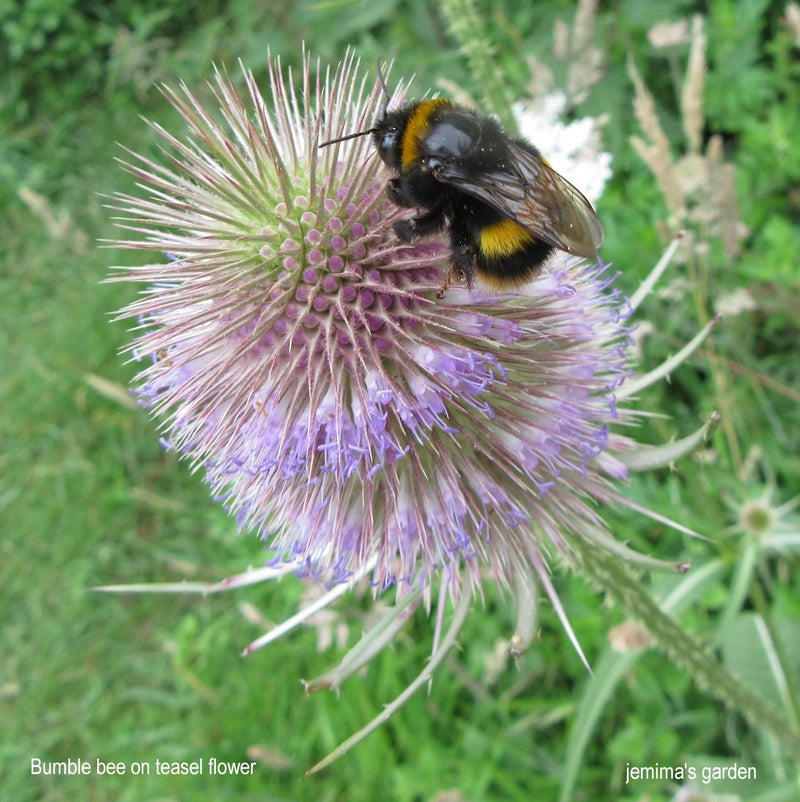


There has been a lot of talk on Twitter and elsewhere recently about whether we should just be growing native plants so I thought I’d add my two penn'orth.
Firstly, which plants are native? Things like our favourite Poppy in the cornfield, they’re the natives aren’t they? Or are they?
I felt it was important to get some information from the people who “know” so I visited the website of The Botanical Society of Britain & Ireland and their excellent article titled “Definitions: wild, native or alien?”.
They define native plants as:
“A native plant is defined as either a plant that arrived naturally in Britain and Ireland since the end of the last glaciation (i.e. without the assistance of humans) or one that was already present (i.e. it persisted during the last Ice Age). “
That seems quite clear, native plants have been here forever.
It’s when we get to the non-native that things start to get trickier and the article states:
“Alien plants (i.e. those species that were introduced either deliberately or accidentally by humans) can be split into two categories, depending on when they arrived on these islands. They are either archaeophytes or neophytes.”
Their excellent article goes on to explain:
Firstly:
“Many garden “weeds” are in fact archaeophytes (long-established aliens) that behave just like natives. These archaeophytes were introduced by humans, often early farmers, from the Neolithic era up to about AD1500, and are now thoroughly naturalised in open, disturbed habitats throughout Britain and Ireland, such as gardens, riverbanks, waste ground and cultivated fields. There are around 200 archaeophytes in Britain and Ireland”
Secondly:
“Virtually all the plants grown for ornament in gardens are classed as neophytes. These differ from archaeophytes in that they were first introduced to these shores after the discovery of the New World in c.1550. This year marks a key turning point for our flora, because from that point onwards plant species were being imported into Britain and Ireland from across the globe for commercial and ornamental purposes.”
To recap, if I’ve understood correctly, archaeophytes have been here a long time and are “naturalised” and neophytes are any plants introduced since 1550. Some could have been here over 450 years and some could have been bred yesterday.
It turns out those cornfield annuals that we think have been here forever and feature in our misty memories of summer walks across the fields, such as Poppy and Cornflower, aren’t native, they’re archaeophytes.


So, should we only be growing natives or at a pinch archaeophytes? Surely our native fauna can’t benefit from any of these nasty new neophytes, can they?
This is where things get a bit difficult.
As it’s not easy to ask the Bees what they think, I asked the next best thing, the excellent “Gardening for Bumblebees” by Prof. Dave Goulson.
As an example, take a look at Phacelia tanacetifolia. It’s a lovely purple flowered annual from the USA so definitely a neophyte. However, Dave Goulson has given it 5 stars using his rating “as to the relative attractiveness of these plants to insects”. Having grown it many times, I can confirm the Bees go mad for it.
Surely a mixture of plants, of varying shapes and types should be grown in our garden to give our wildlife a good choice and cater for as many different species as possible?
Maybe leave the recently bred, latest trend in plants, with no pollen or nectar and possibly sprayed with insecticide, at the garden centre?
A lot of the native plants such as Bird’s Foot Trefoil are absolutely fantastic for providing food for Butterfly and Moth caterpillars but aliens such as Anise Hyssop and Purple Toadflax provide lots of nectar and pollen for Bees and Hoverflies.
I understand that people may want to restrict their plants to just native or naturalised so we’ve now marked all our seeds accordingly.
Native Wildflowers are marked as such, Neophytes are marked as Naturalised Wildflowers and archaeophytes, we’ve marked as Cottage Garden Flowers or Herbs, depending on their traditional use.
You can check which creatures each of our plants attracts and feeds on their individual page in our shop.
Lastly, it seems to be the word “Meadow” that causes the most controversy on social media.
We do sell “Flower Meadow” mixes, some of which contain non-native species. These are available in smallish quantities suitable for gardens and will produce a lovely area of flowering plants providing food for a wide range of wildlife.
These are not intended to replicate a naturally evolved, hundreds of years old, native wildflower meadow.
If anyone can suggest an alternative term for “Flower Meadow” we’ll certainly consider using it in future.
For further information, I would certainly recommend a visit to the website of The Botanical Society of Britain & Ireland https://bsbi.org/definitions-wild-native-or-alien.
Their article also contains a link to the Plant Atlas website which has a search facility allowing you to discover whether a plant is native, or not.
Thanks for reading
Jane


Add comment
Comments